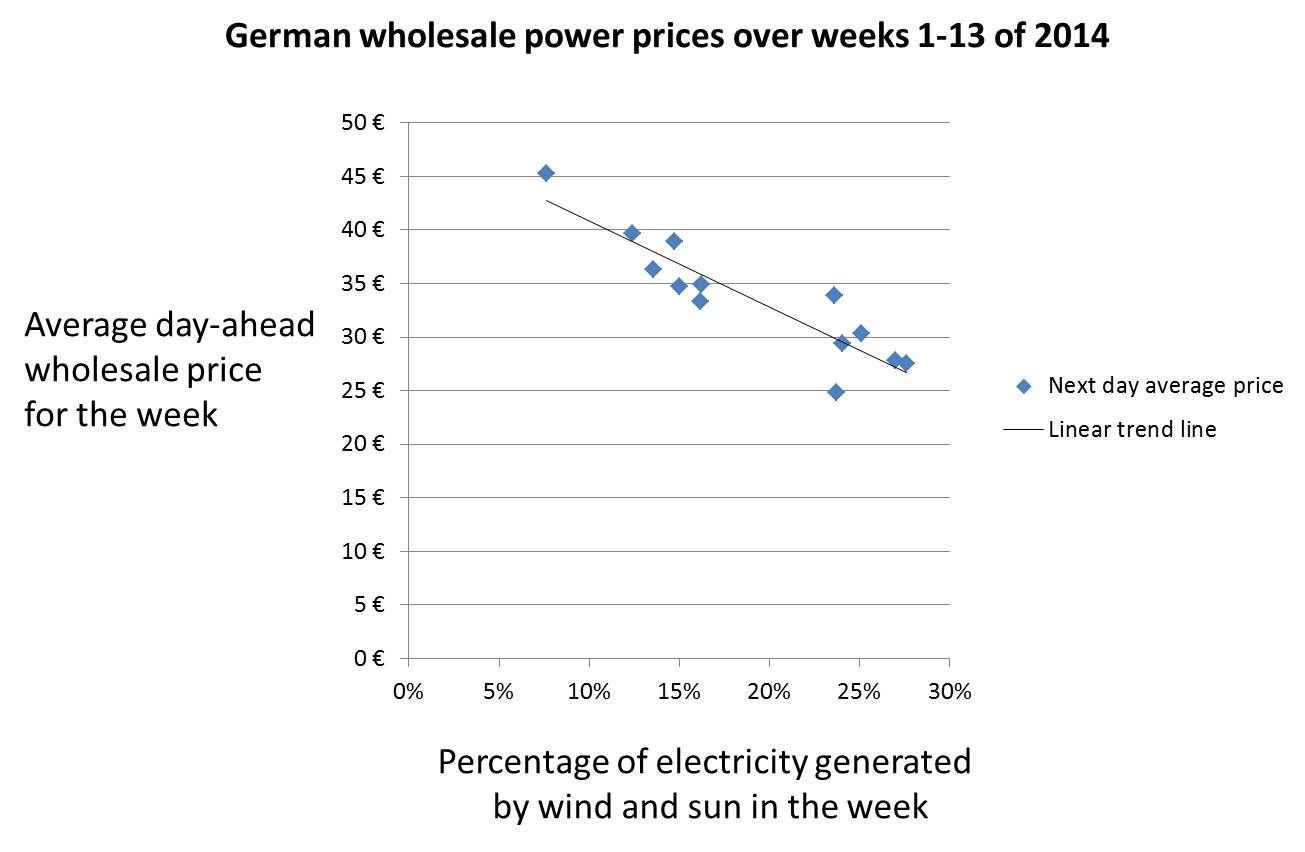Wind power's effect on German electricity prices
Germany’s large amount of wind and solar power gives us a clue of what will eventually happen to UK energy markets. With over 60 gigawatts of capacity from wind and sun renewables can provide a large fraction of German electricity needs across the year. A windy week cuts average power prices nearly in half. The chart below shows how the average day-ahead power price in Germany fluctuated during the thirteen weeks of January, February and March. The weekly cost of wholesale electricity has been as high as €45 a MWh and as low as €25. (These figures are well below the equivalent UK figures, which averaged about €60 during the period).
The variation in wholesale price has been driven by changes in the average percentage of electricity provided by wind and solar during the week. This has swung between 8 and 27% of electricity supply over the three month period. Peak wind weeks have been associated with average power prices well under €30.
A CCGT power station needs to spend €30 just on fuel to generate a megawatt hour. The downward price pressure imposed by wind is making gas generation particularly unprofitable.The first three months of 2014 have shown just how destructive wind and solar can be to the finances of traditional power sources. Even nuclear power stations, which cost no more than €10 a MWh to operate, have been affected.
(Original data from the wonderful people at www.ise.fraunhofer.de)
During the first quarter of the year power prices went close to zero at some point during almost all Sundays, when power demand is at its lowest. On two days, Sunday 16th February and Sunday 16th March, prices fell to minus €50 for several hours. These negative prices arose because of forecasting errors of 2 and 3 GW. In the context of available wind generation capacity of more than 30 GW, these numbers are not large: errors of more than 1 GW are not uncommon in the UK which has about a quarter as much wind power as Germany. Power prices in countries with large amounts of variable renewable capacity are becoming hugely sensitive to unexpected small changes in electricity production.
